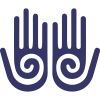Moving slowly is an effective tool to help change perception, motor control, and threat associated with movement. Here are six reasons to go slow:
1. It’s much better to go slowly if you want to move with deliberate intention and focused attention. Fast movements begin and end before you have time to notice anything.
2. Slow movement increases the amount of time you have to process the sensory information your body send to your brain. The brain creates maps that it uses to make movement better with repetition. If you want a map of all the movements of your shoulder joint for example and a good assessment of the relative comfort of the many different angles it can move, you will gain far more information by moving slowly.
3. It is easier to tell the difference between one and two pounds of pressure than it is to tell the difference between 100 and 101 pounds. In the context of movement, this means the slower and more gently you move, the easier it is for you to know if you are using excess effort or tension to perform the movement.
4. Slow movement is more precise than faster movement as they recruit different types of muscles. Thus, is you want to improve your posture for example, slow movement is a more effective way to gain control and to engage the tonic slow twitch postural muscles, as opposed to phasic fast twitch prime mover muscles.
5. If you move quickly, you will have a limited repertoire of “feedforward” familiar and habitual movements. Slow movement is required if you want to move in novel or unpracticed ways.
6. Moving slowly reduces the perceived threat associated with movement because it decreases mechanical forces to their minimum. Thus, slow movement is an important tool in a plan of graded exposure that can allow you to explore and try movements you may have neglected for years because they are perceived to be unsafe and involuntarily restricted.
If you would like to bring more awareness and control into the your movement, to improve the connection between your body and your nervous system and to explore novel and unexpected ways to move, join me in my online or in-person yoga classes.
We are never in a hurry!
Adapted by Todd Hargrove’s book A guide to better movement
Photo by Martin Vysoudil on Unsplash



